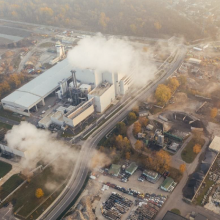
INMS is pleased to announce the release of the first publication in the INMS Guidance Document Series: Nitrogen Mitigation. INMS guidance document on measures for sustainable nitrogen management.
Thiscomprehensive
resource is designed to support sustainable nitrogen management across the entire anthropogenic nitrogen cycle. Developed as part the International Nitrogen Management System (INMS), which is supported by the Global Environment Facility through UN Environment Programme, this document provides actionable strategies to reduce nitrogen (N) losses and enhance nitrogen use efficiency (NUE).
With over 150 technical and non-technical measures outlined, Nitrogen Mitigation delivers a holistic approach to integrated N management. It addresses the fragmented policies currently governing N management by offering consolidated guidance that spans multiple sectors, including agriculture, organic waste management, fuel combustion, and aquaculture.
The document also explores the synergies and trade-offs involved in applying different measures, with case studies demonstrating how tailored "packages of measures" can improve N management in specific systems. Key principles, such as favouring circularity of N flows and leveraging economic incentives for N resource recovery, offer a clear path to aligning sustainable N practices with the UN Sustainable Development Goals.
Key messages include:
- A wide array of technical and non-technical measures exist to address nitrogen (N) losses throughout the anthropogenic N cycle.
- Socioeconomic barriers, fragmented policies and limited stakeholder access to guidance hinder the widespread implementation of N management measures.
- Guidance and governance on sustainable N management are currently fragmented among different N forms and sectors, indicating a need for consolidation.
- Nine key principles of integration are outlined to facilitate sustainable N management, including consideration of all N forms, sources, and emissions across spatial and temporal scales. Where possible, conditions should be encouraged that favour circularity of N flows, enabling external N inputs to be minimised and outputs maximized.
- Agriculture, being the largest consumer and emitter of reactive N, is identified as a critical sector for sustainable N managements, however opportunities to enhance N sustainability extend across all sectors involved in the anthropogenic N cycle, including organic waste/residue management, land and aquatic resource management, aquaculture and fuel combustion.
- Leveraging economic incentives for recovering N resources and utilizing advancements in data collection and technology dissemination can mobilise change in N management practices.
- Integrated sustainable N management offers multifaceted benefits across environmental, economic and health domains, aligning with UN Sustainable Development Goals and UNEA resolutions on Sustainable Nitrogen Management.
For further insights and to explore detailed information on the measures mentioned, the guidance document is designed to be used alongside the INMS Nitrogen Measures Database - a free online resource offering an extensive body of evidence on N management practices.
For full access to the Nitrogen Mitigation guidance document, visit: Nitrogen Mitigation Guidance Document
To access the INMS Nitrogen Measurs Database, visit: INMS Nitrogen Measures Database
